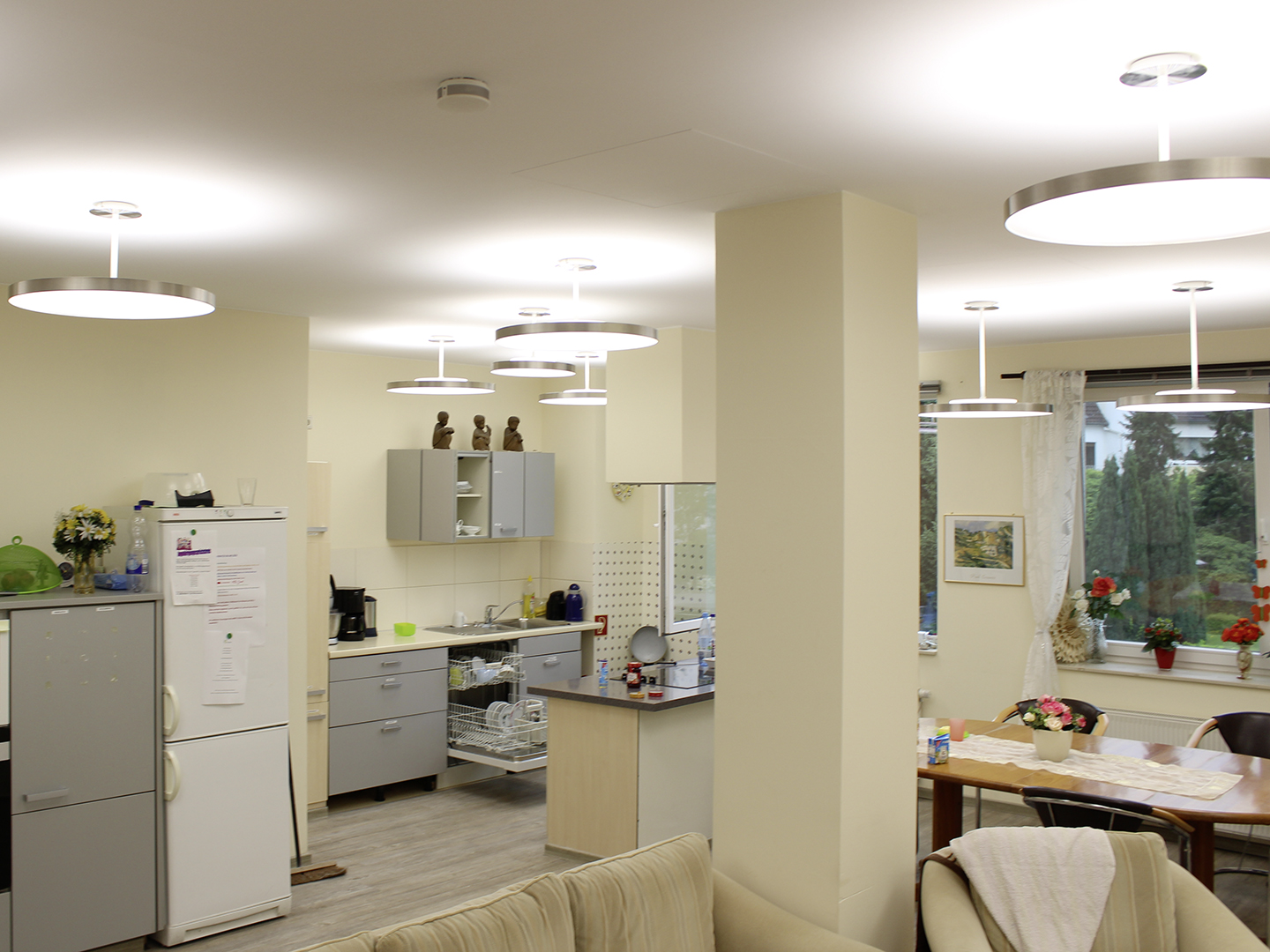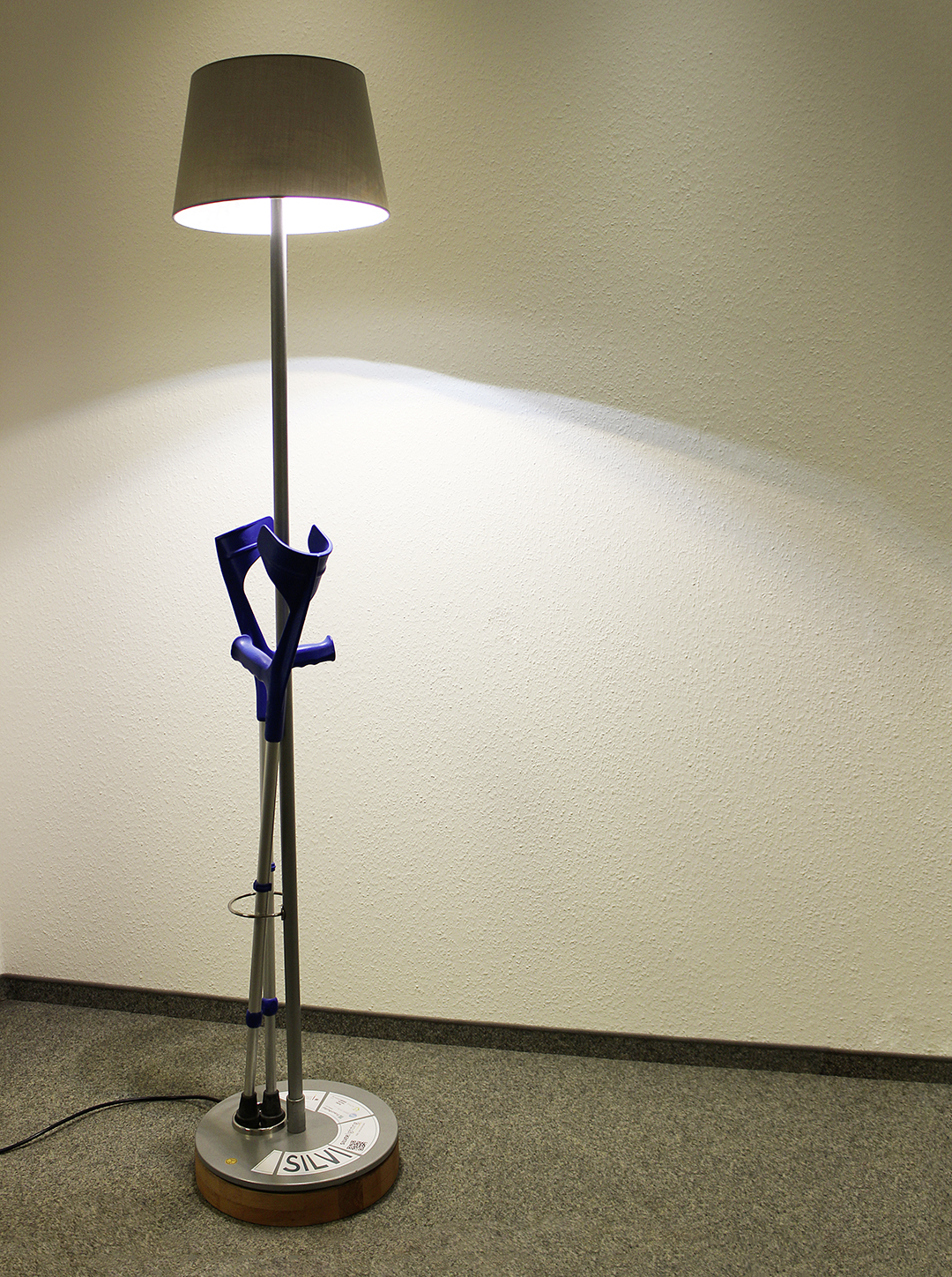Project SILVERlighting examines the influence of light



Recently, case studies for a biodynamic lighting system in a residential community of dementia patients of the Alpha gGmbH in Duisburg started. “To shape the quality of life optimally for our residents, we already work with a lot of technical assistance systems. In a small survey we researched the influence of lighting on the residents – with a positive outcome”, explains Heike Perszewski, management at ALPHA. Therefore it was a logical step for Perszewski and her team to participate in the project SILVERlighting. Relatives and residents were excited as well.
Color spectrum adjusted to time of day or night
First, the researchers prepared the infrastructure. Almost 300 meters of cable had to be laid, existing motion sensors and switches integrated and the ceiling painted, before the 66 ceiling lights with diameters of 400 and 600 mm could be installed. Each lamp possesses two kinds of LEDs with color spectra of 3000 and 6500 Kelvin. “The latter shine bluish and a lot brighter, that is called cold white. In contrast to that the lamps with 3000 Kelvin shine warmer, which is therefore called warm white”, explains André Reinecke, IT department at Fraunhofer UMSICHT and responsible for the development and configuration of control components. Therefore, the corresponding color spectrum of the respective time of day or night can be displayed optimally. A Digital Addressable Lighting Interface (DALI)-Bus takes control of the lamps.
The amount of lamps and their positions have been determined beforehand by the lighting designer of the project. The result provides the required brightness and shadows and reflections are avoided. This is important, because many senior residents and dementia patients can’t interpret reflections on the floor, for example from incidence of light through the window, correctly. They expect a smooth floor surface and consequently walk along the sides of the room. Experience shows that a nearly shadowless lighting concept, like the one from SILVERlighting, can help people to walk their usual paths again. Additionally, it plays an important role in fall prevention.
Improve the well-being of residents
The success of the project is among other things measured via an app that has been developed by Fraunhofer UMSICHT in cooperation with Alpha. Reinecke: “It is important for our residents to live their everyday life as usual. The employees of Alpha support the project by filling out the app for each of the 14 residents daily.” This way the researchers obtain data about activity level, movement and the wake-sleep behavior. The names of all residents and employees are pseudonymized.
By the means of a standardized process, like the Minimal-Mental-Status-Test (MMST) and Neuropsychiatric Inventory (NPI), the app is going to consider the status of dementia in the future as well. Combined with the information of the employees the SILVERlighting team can make statements to the well-being of the residents. “The achievement of a stabilized wake-sleep cycle would be a great outcome”, adds Reinecke.
Floor lamps for the domestic field
In addition to the ceiling lighting in the shared areas and the rooms, there also belong freely installable floor lamps to SILVERlighting. These are installed in the rooms and offer the possibility of individual lighting via circadian light. In a next step the suitability for the domestic field is going to be tested. "Not only in establishments like dementia patient communities or retirement homes people are getting increasingly rare exposure to natural sunlight. People in domestic care have the same problem”, knows Reinecke. And because even on a cloudy day the lighting niveau is a lot higher than normal lamps are able to achieve, an appropriate lighting concept could help here as well.
The project SILVERlighting is supported by the Federal Ministry of Education and Research (BMBF) under the program “KMU-innovativ”. Participating are Fraunhofer UMSICHT, Hochschule Ruhr West, Mülheim a. d. R., die licht|raum|stadt|planung GmbH, Wuppertal, and ALPHA gGmbH, Duisburg.
[1]Eichele, Gregor et al.: Chronobiologie: Das genetische Netzwerk der zirkadianen Uhr koordiniert die Wechselwirkung zwischen Lebewesen und Umwelt. In: Tätigkeitsbericht 2007. Max-Planck-Institut für biophysikalische Chemie, Göttingen, 2008.
More information and contact
 Fraunhofer-inHaus-Center
Fraunhofer-inHaus-Center